‘Persia’, ‘Iran’, ‘Isfahan’, ‘Shiraz’; names that conjure up the promise of endless desert landscapes, lush green hills, sapphire colored mosques, succulent food and the most fragrant rice you will ever taste. Names that carry with them millennia of culture, history and civilization. Yet, Iran, at least in the past few decades, also conjures up a range of negative connotations; images of angry mobs, news reports of human rights abuses and sharia law.

This article will certainly not be an analysis of the political history or present of Iran, the geopolitics of the Middle East, or an essay on human rights. What it will be is the subjective impression of a traveler, visiting a country and experiencing a culture he has been fascinated with since he can remember. Growing up in the Netherlands exposed me to different cultures at a very young age. Apart from the mix of Serbian and Dutch culture I call my own, spending four years in a refugee center and growing up in a multicultural society there were also whiffs, pinches and dabs of Turkish, Armenian, Russian, Somali, Arabic, African, Filipino and others. None, however, left a bigger impression on me than Persian culture.
In fact, lubia polow, an Iranian rice dish and tahdiq; the crispy rice that is created at the bottom of the pot during the cooking process, are among my all-time favorite foods. What’s more, I consider them a childhood comfort food – odd for a Dutch-Serbian guy, who grew up in Limburg… Seeing images of Iran’s magnificent mosques, Persian gardens, and the former Shah’s extraordinary palaces on television and knowing first-hand about the genuine hospitality and warmth of the Iranian people, visiting Iran was something I knew I wanted to experience, while at the same time being something I thought was not going to happen any time soon. Luckily, it did. And it was everything I expected and more.
One of the most asked questions when I told friends where I was going was ‘’is it safe?’’ and ‘’why are you going to Iran’’? The first question has a very simple answer; yes – very. If you feel safe in Serbia, you will feel safe in Iran as a tourist, if not more so (traffic excluded!). Walking through any of the cities busy streets felt like taking a stroll through Dorćol, with the addition of friendly locals occasionally approaching you to bid you a ‘’whereyoufrom’’ and a sincere ‘’welcome to Iran’’ with a smile before continuing minding their own business. Iranians are a friendly, proud and open people with very distinct values, culture and mannerisms from their neighbors in the Middle East.
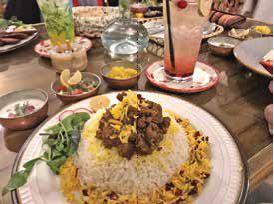
fruit and marinated lamb
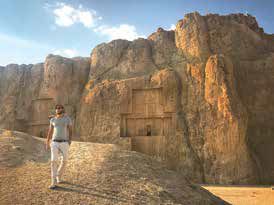
Persian Emperors are buried in tombs carved into the mountain
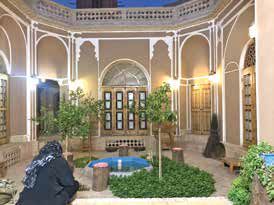
yard and a water feature
As to why? Imagine a modern, safe and clean country with efficient and functional public transportation, incredibly friendly people, delicious food, out-ofworldly landscapes, majestic structures and the heritage of one of the world’s most ancient civilizations. Add to that a tranquil vibe that is created by local Iranian families having tea and snacks in the shade of one of the many green spaces dotted around Iran’s cities, or people enjoying a watermelon smoothie while sitting on a carpet in one of the many trendy bars, located in a shaded courtyard centered around a water feature cooling people down from the desert heat. Sound interesting?
Now add to that the fact that you will be one of the relatively few foreign tourists (but certainly not the only), due to, well, a lot of people asking the two questions I mentioned before. That means that you’ll hardly ever stand in a line for a museum and be able to see many of the majestic sites as they should be seen – serene and quiet, without hordes of sandal-and-sock tourists that have become almost inescapable in modern travelling!
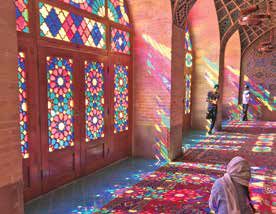
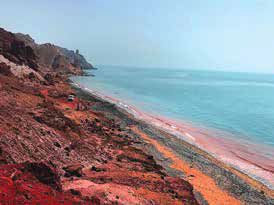
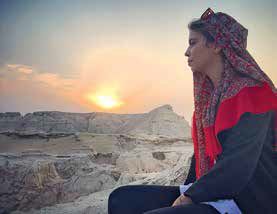
A relatively short five-hour flight takes you from Belgrade’s Nikola Tesla Airport to Tehran’s Imam Khomeini Airport via Istanbul. Our trip took us to Teheran, Yazd, and the ruins of Persepolis, Shiraz, Isfahan and two islands in the Persian Gulf called Qeshm and Hormuz in thirteen days. Teheran’s hipster restaurants, Yazd’s adobe old town dotted with wind catchers and Zoroastrian towers of silence, Persepolis’s ancient grandeur, Shiraz’s intricate and breathtaking mosques, Isfahan’s relaxed vibe and bustling Christian (Armenian) quarter and the Persian Gulf’s desert islands all left an impression so awe-inspiring, exotic and yet so familiar that it is difficult to put into words.
Iran is home to one of the world’s oldest continuous major civilizations and has a history spanning more than five millennia, during most of which it was known as the Persian Empire – a state that stretched from the Balkans to the Indus Valley and comprised nearly half the world’s population. That does not escape you while you are there. The country breaths history and being able to see the tombs of men like Cyrus the Great, an emperor mentioned in the Old Testament, Xerxes I, who fought the Spartans at the battle of Thermopylae and the ruins of Persepolis, a city infamously raised to the ground by Alexander the Great, among countless other historical sites makes visiting Iran a must for anyone interested in human history, rivaling and perhaps exceeding the likes of Italy and Greece. Due to its history and geographical position at the center of the Silk Road, Iran has been as influenced by other cultures as it has influenced others. Its’ ethnic make-up of Persians, Turkmen, Arabs, Turks, Jews, Armenians and other ethnicities make Iran a rich tapestry of languages, customs, foods and traditions.
We, for the most part, visited Central Iran, the epicenter and cradle of Persian culture. To me, a soft-spoken, melodic language and a sophistication and attention to detail that you can see, taste and smell characterize Persian culture. Saffron infused…well…everything, rose petal tea, intricate tilework, tapestries and glass inlays and a distinct love for poetry and relaxation coupled with ubiquitous water features, fountains and gardens, combined with an almost inherent elegance that Persians carry themselves with, particularly the women, all come together to give you an almost overwhelming feeling of experiencing an ancient culture’s hedonism and sophisticated way of enjoying of life.
In somewhat of a contrast to that gentle sophistication are the islands of Qeshm and Hormuz. Desert islands in the Persian Gulf the oppressive heat of which hits you like a ton of bricks on exiting the airplane. The rough and rugged desert terrain, different smells and mostly Arabic population is in quite a contrast to the gentle water features, gardens and soft-spoken Persian vibe in central Iran. There is definitely no poetry and rose water tea there.
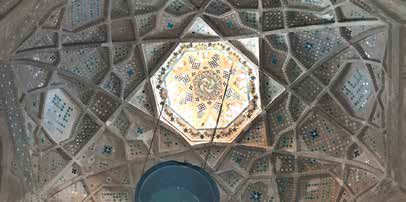
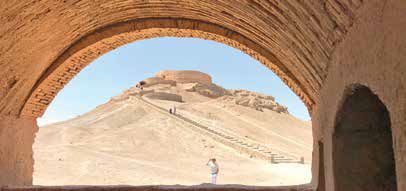
Once you are past the first impression of being away from your shaded inner courtyard, fountains and rosepettals however and your body acclimatizes to the oppressing heat, the friendliness of the locals and riding in the back of the ubiquitous Toyota pick-up trucks through the fantastical desert landscapes quickly exchanges a sense of discomfort for a sense of amazement.
Qeshm’s ‘’Valley of the Stars’’, a mesmerizing maze of canyons the locals say were created when the stars fell from the sky, and Hormuz island, also known as the ‘’Rainbow Island’’ for its seventy-two colors of sand, are fascinating micro cosmos that perfectly depict Iran’s diversity and magic. Thirteen days in Iran not only fulfilled a life-long desire; it also reaffirmed the fact that a country’s culture and people are separate matters from its politics, a matter the people of the Balkans are painfully familiar with. In fact, if we were only to travel to countries the politics of which we agreed with, we would be hard pressed to find destinations.
Iran is a fascinating country that will change your perspective on travelling into the ‘’unknown’’ and on the ability to feel completely at home in a culture wildly different and yet incredibly similar to your own!
Text: OLIVER SAROV